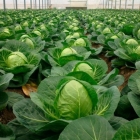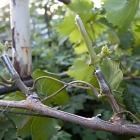 Usually the country season begins with growing seedlings. The goals are obvious: so you can increase the growing season, get an early and higher harvest.
Usually the country season begins with growing seedlings. The goals are obvious: so you can increase the growing season, get an early and higher harvest.
All begins with soaking the seed, which speeds up the process of their germination. Put the seeds on slippers and wrap them, water with warm water with the fertilizer "Ideal8" (for all agricultural crops) or "Rainbow" (for floral crops). Do not keep the seeds clumsy more than 1-2 days, otherwise they rot. Every 4-5 hours change water.
For the cultivation of seedlings, a special soil mixture is used, which can be made independently of humus, sand and garden land, mixing them in proportions depending on the culture.
If you do not have the opportunity, time or desire to prepare the soil mixture yourself, use ready-made soils designed to meet the needs of plants, such as "Live Earth" "Universal" and "Garden Earth" (for vegetable and flower crops), "Living Earth", "Special №1" and from tomato "(for tomatoes, peppers and eggplants)," Microsicon "(for vegetable crops).
The soil for seedlings should be filled with containers so that it remains to the top approximately1 cm, compact. Typically, the seeds are sized by furrows with a distance of 1-2 whim. Next, they are sprinkled on top of the ground or perlit, whose layer should not exceed the height of the seeds.
Next, you need to create conditions for growth.
Temperature. General rule: Gear seeds at a temperature of 22-25 ° C, grow seedlings at 15-18 ° C. Low temperatures in the cultivation of seedlings at least a little and slow down, but the plants are obtained strong, hardy and adapted to environmental conditions.
Watering. Soil should not disappear. It must be maintained all the time in a wet state, but avoiding water stagnation. Sprouts should be sprayed from the pulverizer, and grained plants water from the watering can. An adult seedlings can be watered from the pallet - it stimulates the development of its root system. The main rule is often gradually.
Feeding When the plants produce the second set of leaves, the time of regular feeding comes. Use liquid organic fertilizers about once a week. Natural fertilizers are best suitable, such as "ideal8". "New ideal8" and "Raduga®". They contain growth stimulants that allow seedlings to grow strong and healthy. But do not overdo: surplus fertilizers lead to stretching and thinning seedlings.













 Start a discussion ...
Start a discussion ...